Japan's northernmost and second largest island is also the country's national park. It's also a sanctuary for wildlife, including the rare red-crowned Japanese crane.
This mountainous land of wilderness, located south of Siberia, is the coldest part of Japan. It offers adventure hounds some of the finest power snow found anywhere in the world, and yet is also home to the Ainu - Japan's little-known indigenous people.
The capital city of Sapporo plays host to the famous annual Sapporo Snow Festival over seven days each February.
Discover Hokkaido - Island Guide
by Rob Dyer
Hokkaido Island Guide: Japan's Unspoiled Wilderness
The Japanese archipelago is filled with majestic natural splendour and historical treasures, but there's still just one magical place that some believe surpasses them all. I'm talking about Hokkaido Island.
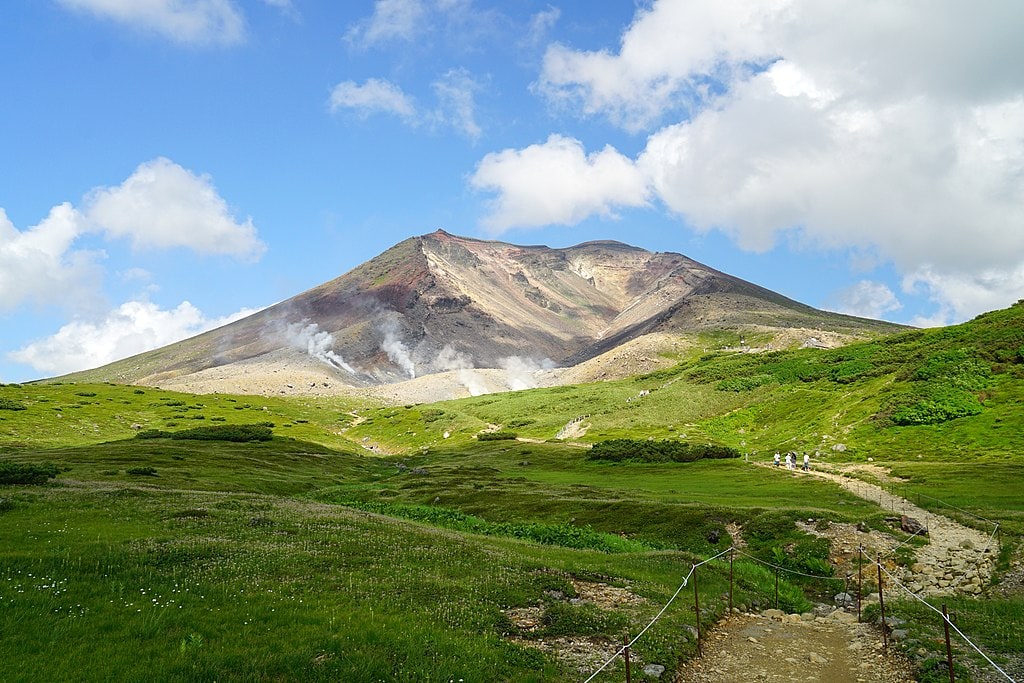
Mount Asahi (Asahidake) is the highest mountain on Hokkaido, located in Daisetsuzan National Park | Photo: 663 highland CC By 2.5
With a reputation as Japan's "last frontier," the island captures many of the country's most significant landscapes and offers up some of Japan's best unspoiled wilderness for travelers to explore.
My earliest trips to Hokkaido
My earliest trips to Japan included time spent on Hokkaido in the deep winter. My travels included everything from snowmobile racing with my wife on a frozen lake, taking an icebreaker ship into the winter ice floes in The Sea of Okhotsk and a helicopter flight over its remarkable landscapes, seeing its rare black fox and sledging in the snow.
So it will always have a special place in my Japan travel memories.
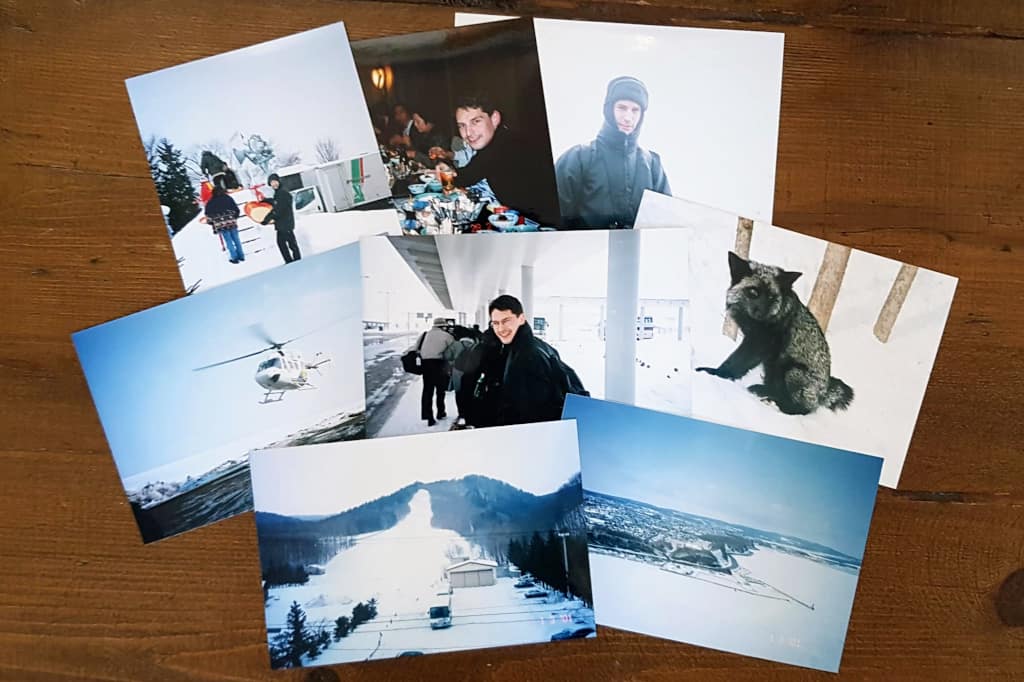
Some snapshots from one of my first trips to Hokkaido in 2001
That's why I've put together this guide to help you plan a trip around the beautiful island - a destination that can easily be reached from Tokyo in only three hours by plane or eight hours by train.
From what you should see, to where you should stay, and how to best get around, this Hokkaido Island Guide will help elevate your visit from good to great.
Where is Hokkaido?
Hokkaido, the northernmost of Japan's four main islands, surrounded by the Sea of Japan to the west, the Sea of Okhotsk to the north and the Pacific Ocean to the southeast.
It sits at the northern tip of Japan's main island Honshu, and just below the Russian island of Sakhalin at its northern point and mainland Russia to the west. Hokkaido is connected to the main island Honshu by the undersea Seikan railway tunnel.
Location Map
Search flights to Sapporo
Introducing Hokkaido
Japan's northern most and second largest island is considered as the country's 'national park'. It's also a sanctuary for wildlife, including the rare red-crowned Japanese crane.
This mountainous land of wilderness, located south of Siberia, is the coldest part of Japan. It offers adventure hounds some of the finest power snow found anywhere in the world, and yet is also home to the Ainu - Japan's forgotten indigenous people.
The capital city of Sapporo plays host to the annual Sapporo Snow Festival over seven days each February.
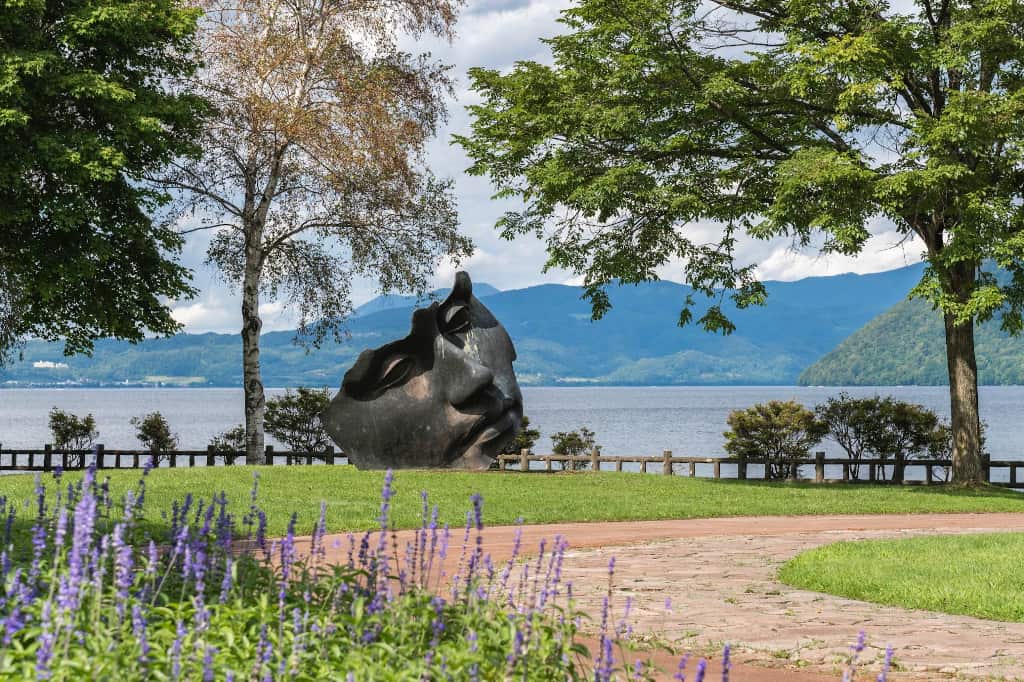
Nature blends with modern art at Lake Toya, Hokkaido | © JNTO
Japan's most northerly island is still largely untamed and wild. It’s also the harshest and coldest part of Japan, with average January temperatures ranging from −12 to −4 °C (10.4 to 24.8 °F).
While it isn't often included in the itineraries of people visiting Japan for the first time, it perhaps ought to be. Hokkaido offers the explorer many opportunities for adventure and experiences that will get you close to Japan’s natural landscape.
Hokkaido Facts & Figures
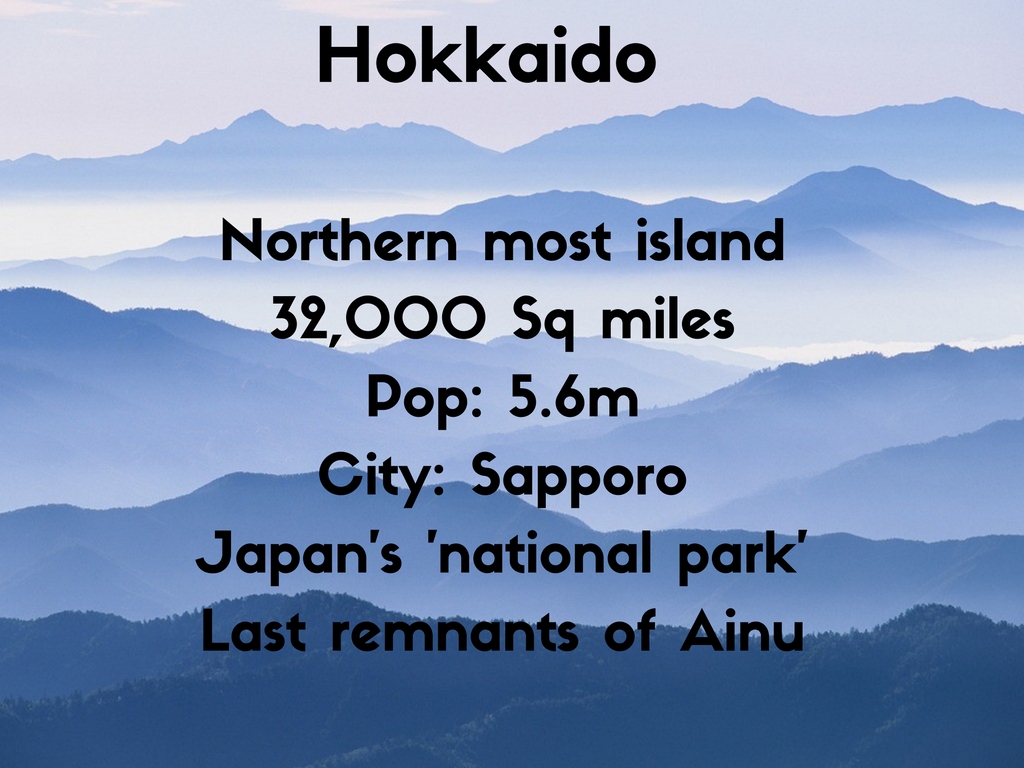
The population of Hokkaido reached its peak in 2000 at 5.7M people, but since has started to decline (5.3M in 2020) making it the lowest population density of anywhere in Japan, with around 35% of the population living in the city of Sapporo. It's Japan's second-largest island after Honshu.
Hokkaido, meaning 'Northern Sea Circuit' is also known as Ezo, and is often still referred to as such in Japan.
The Climate in Hokkaido
CURRENT WEATHER
Best times to visit Hokkaido
Hokkaido's climate is markedly different to that of the main island of Honshu. Hokkaido is the coldest region in Japan with an average high temperature of only 11°C (52°F). The region has relatively cool summers and icy/snowy winters.
The warmest months are July through to September, when average temperatures range from 20°C (68°F) in July, peaking around 22°C (72°F) in August, before dropping to 18°C (64°F) in September.
Coldest months run between December and March, where average temperatures remain below zero °C (32°F) through December, January and February.
August is the hottest month in Hokkaido with an average temperature of 22°C (72°F) and the coldest is January at -4°C (25°F) with the most daily sunshine hours at 7 in June. The wettest month is September with an average of 171mm of rain. The best month to swim in the sea is in August when the average sea temperature is 18°C (64°F).
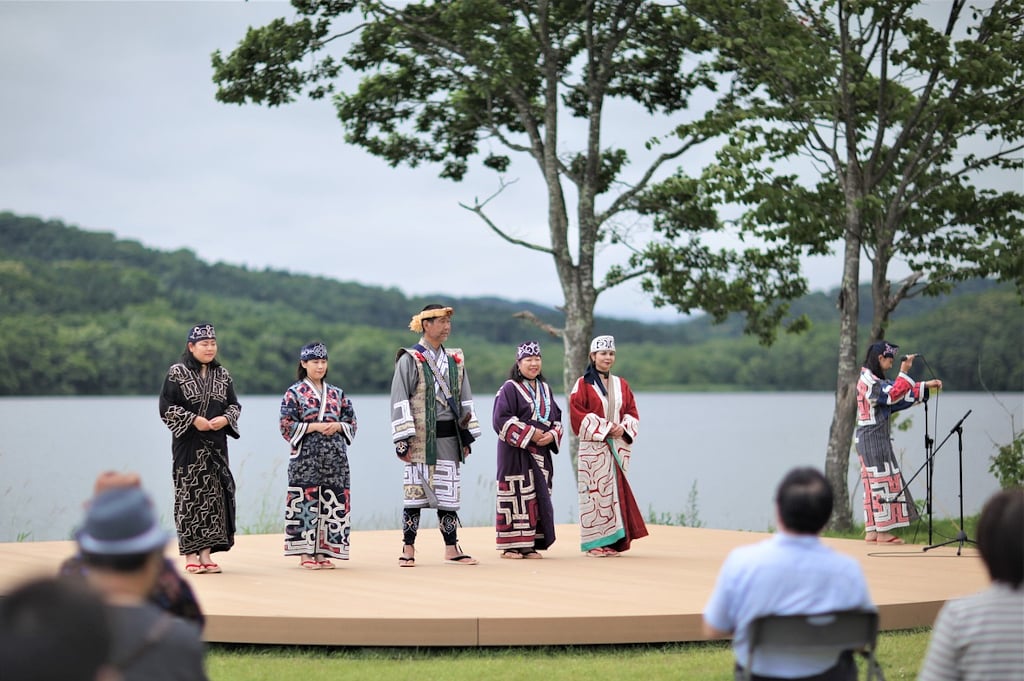
National Ainu Culture Museum celebrates and preserves Japan's indigenous culture
Popular Hokkaido sights
If you're looking for the must-see sights of Hokkaido here's a list of some of the top locations...
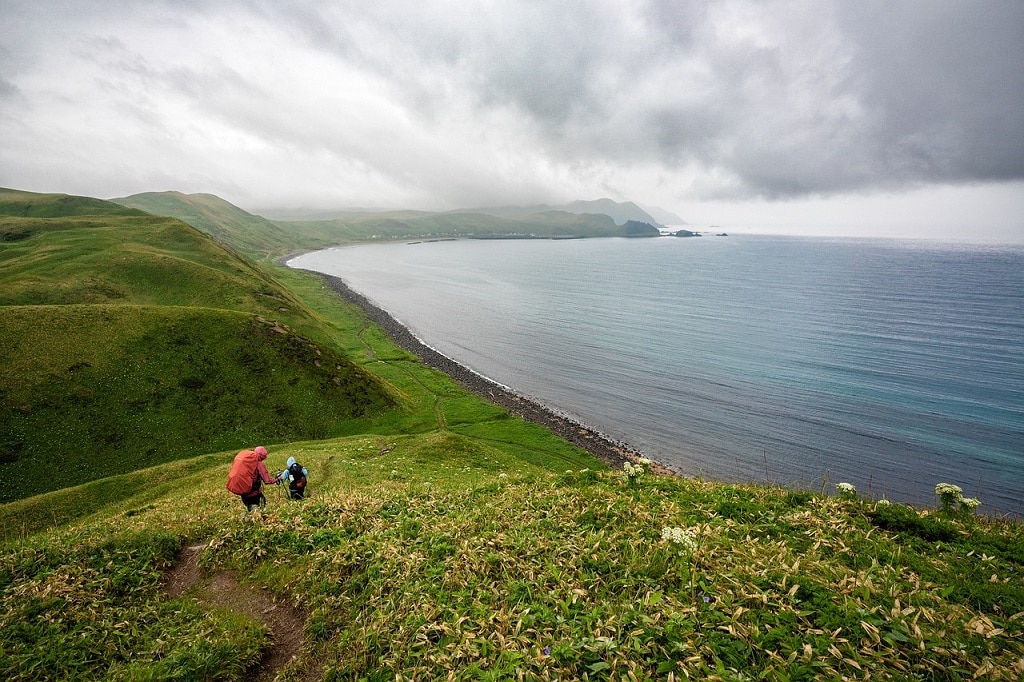
Rebun Island is covered in verdant green hills and is home to rare alpine summer flowers
Why go to Hokkaido?
Hokkaido offers visitors the opportunity to 'get away from it all'. It's a large, sparsely populated island with an unspoiled wilderness that is free of the crowds and distractions of larger, more popular tourist destinations like Tokyo or Kyoto.
Hokkaido is an adventurous traveler's paradise because it's the least-visited major island in Japan. While it offers great opportunities for hiking and camping in the summer, the winter months are perhaps the most sublime time to visit.
Snow falls between October and April, with the heaviest falls from late January and February, transforming this island into a snowy wonderland that can only be experienced here.
VIDEO: Sapporo Vacation Travel Guide
Skiing in Hokkaido is unlike anywhere else in the world and offers a multitude of steep, deep-powder slopes for lovers of the sport. Incredibly, there are over 100 ski resorts on Hokkaido - more than anywhere else in the country. Niseko (and its surrounding areas) is Hokkaido's leading ski and snowboarding resort.
The annual Sapporo Snow Festival draws thousands every February and is one of the most popular winter events in Japan. The festival celebrates Hokkaido's cold winters and its traditional culture.
Hokkaido is the location of Japan's most northern point, Cape Sōya. From here the Russian island of Sakhalin is visible 43km (28mi) in the distance. A statue of Mamiya Rinzō, celebrates the Japanese explorer who crossed from Sōya to Sakhalin in Japan's late Edo period - the early nineteenth century.
The Ainu are an indigenous people who primarily inhabit the island (although they were also living in northern Honshu). They were persecuted for decades, but now are increasingly revered and their culture is protected. The National Ainu Culture Museum can be visited in Shiraoi, south of Sapporo.
What to see - whatever the season
Here's how the seasons fall in Hokkaido:
Spring (April-June)
Summer (July-August)
Autumn (September-November)
Winter (December-March)
- Spring
Spring in Hokkaido is colder than the rest of Japan due to its location. Ski resorts remain open well past March. Snow is still prevalent in the mountains. Skiers and snowboarders looking for fresh powder should head up north to the trails in Niseko, Furano or Rusutsu.
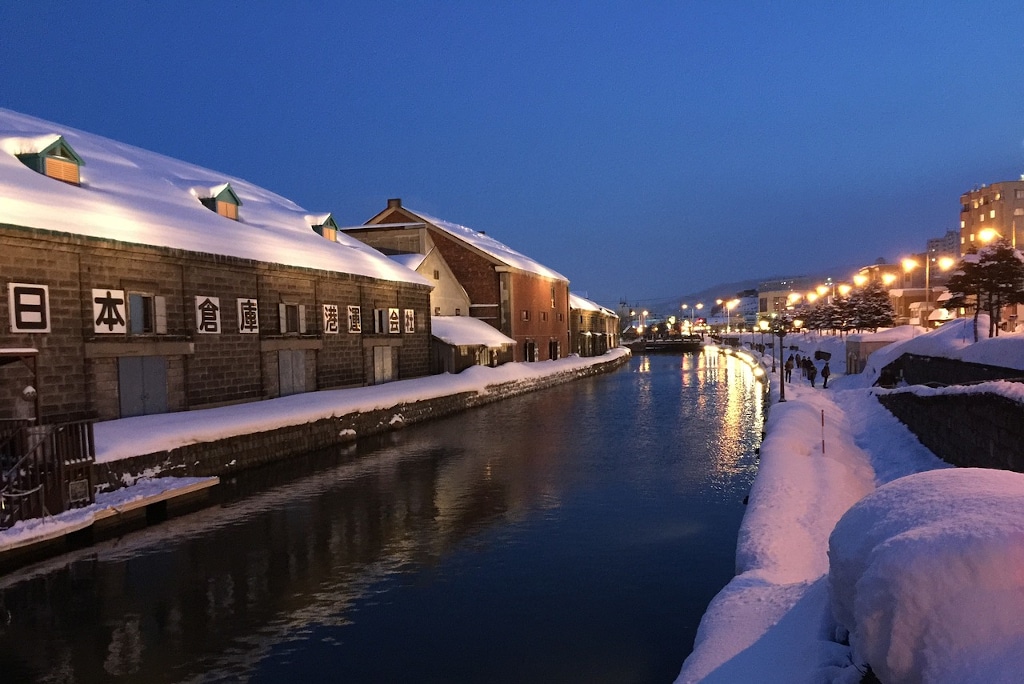
The Otaru canal is a popular walking spot for visitors to the town of Otaru - northwest of Sapporo
Cherry blossom (sakura) season comes to Hokkaido later than the rest of Japan. Here the blooms are typically at their peak between late April and early May.
- Summer
During the summer months, Hokkaido's climate becomes much cooler than the rest of Japan due to its latitude, making it a great location for anyone (like me) not keen on Japan's very hot and very humid summers.
Summer is a great time for viewing the dramatic flower and lavender blossom displays around the Furano region. It's also when the mysterious-looking (but man-made) Shirogane, or Aoi-ike ('The Blue Pond') in Biei is looking its most vivid turquoise.
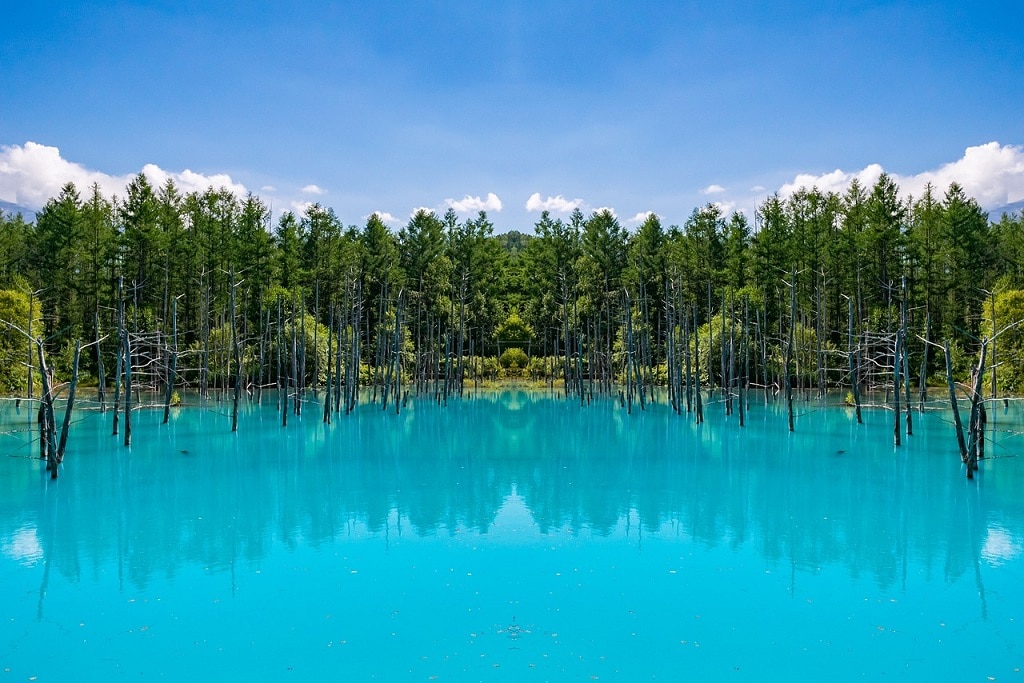
Shirogane, also known as Aoi-ike (the Blue Pond) in Biei's Kamikawa District is man-made but still beautiful
The popular resort area around Lake Toya centered on a caldera lake with islands, boat tours and onsen is a 2 hour drive southwest from Sapporo.
- Autumn/Fall
Autumn in Hokkaido is not quite as cold as winter, but it’s a great time for hiking and camping, even in the mountains. It's also one of the first places where the landscape gradually transforms from green to yellow and red.
Good locations for viewing the leaves include Shiretoko Five Lakes, Shirakabayama, Fukidashi Park in Kyogoku Town, and in Sapporo at Hokkaido University Gingko Tree Avenue, Nakajima Park, and Jozankei Onsen.
The annual Sapporo Autumn Festival runs for three weeks takes place in Odori Park, in the city centre, which doubles up nicely as another spot for catching the autumn foliage.
- Winter
Hokkaido is virtual synonymous with wintertime. It's the season that most typifies the island and that's reflected in the number of festivals and events held during the season.
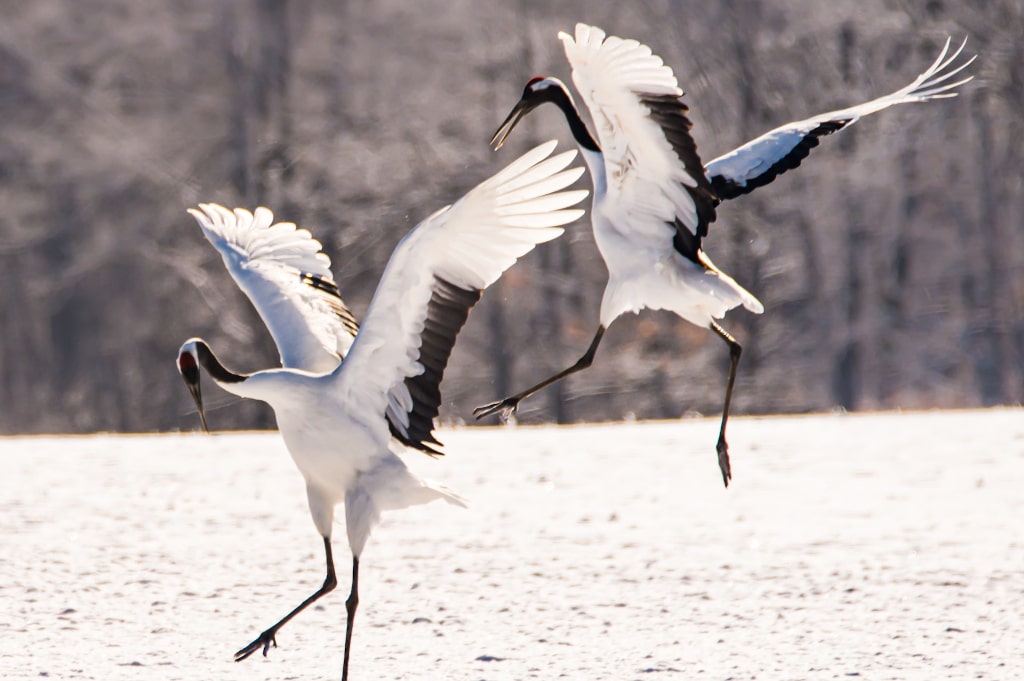
The rare red-crowned Japanese crane is perhaps Hokkaido's best-known living symbol
Winter months in Hokkaido are a dream for anyone who likes snow and skiing. Niseko, one of the most popular ski resorts in Japan, is located here. The snow festival held in Sapporo every February is one of the biggest events on the island.
If you want a bit of rugged adventure and don't mind the biting winds you might consider taking a cruise on an icebreaker ship out in the seasonal ice floes in the Sea of Okhotsk.
Hokkaido's 3 major cities
The main cities on the island are Sapporo, the largest city of Hokkaido and 5th-largest in Japan, Asahikawa in the central region, and the port of Hakodate directly facing Honshu in the south.
Highlights of Sapporo
Highlights of Sapporo include Odori Park, popular for cherry blossom viewing in spring and a great place to relax or stroll around. The Sapporo Clock Tower is a local landmark built in 1878 and the oldest surviving wooden clock tower in Japan.
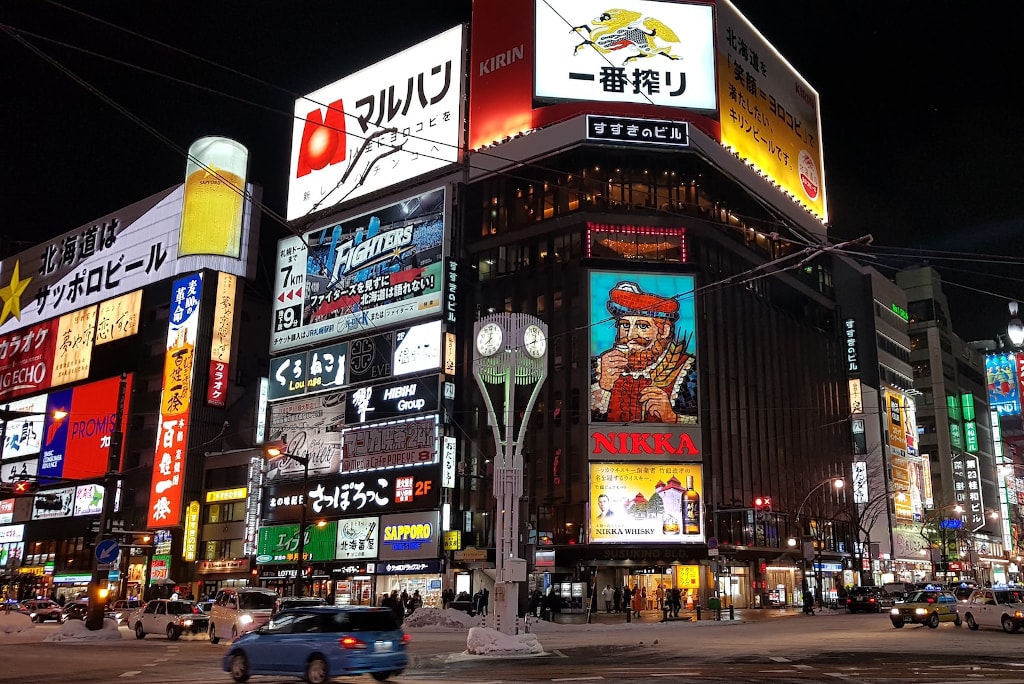
Susukino, Sapporo's lively and colourful entertainment district
Susukino is the city's lively and colourful entertainment district, where you'll find many consuming the capital's famous local brew. Head to the Sapporo Beer Museum and Beer Garden to see how it's made and to sample some for yourself.
The city hosts the annual Sapporo Snow Festival over seven days each February during which ice sculpture artists compete with each other to create the most spectacular works of art, some of which are literally the size of buildings. It takes place in Odori Park, along the streets of Susukino, and at the Tsudome sports dome.
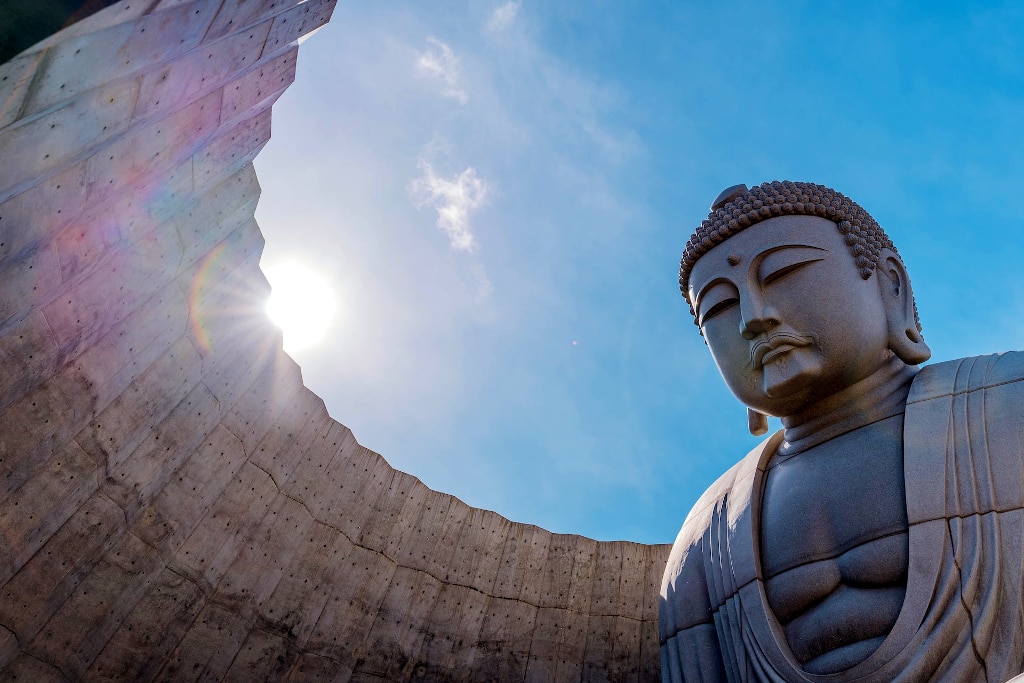
Tadao Ando's spectacular The Hill of The Buddah, site of a Buddhist shrine
Followers of modernist Japanese architect Tadao Ando must check out his stunning The Hill of The Buddah - a Buddhist shrine at Makomanai Takino Cemetery. Opened in December 1025, the shrine features a 13.5 m (44 ft) tall statue of the Buddha encircled by an artificial hill rotunda planted with 150,000 lavender plants, and a reflecting pool.
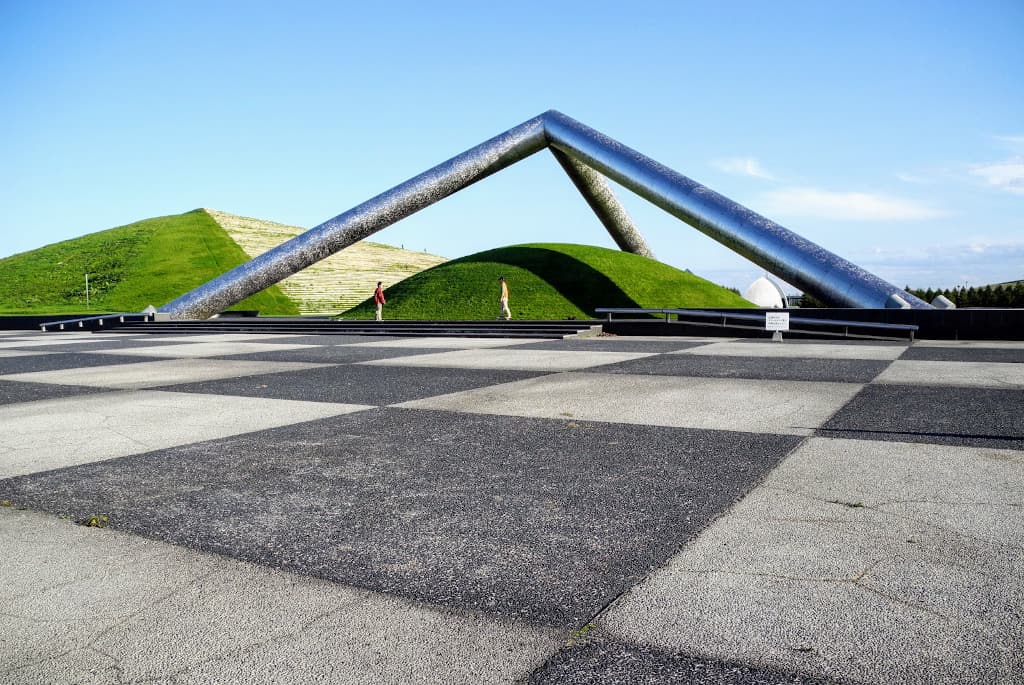
The Isamu Noguch-designed Moerenuma Park is like no other public park you've ever seen
12km from Sapporo lies the unique Moerenuma Park. Designed by Japanese-American artist and landscape architect, Isamu Noguchi, the whole park is a single sculpture. The park won a Good Design award in 2002 for its revitalization of what previously had been a waste treatment area.
LEARN MORE: Moerenuma Park: Discover Sapporo’s Incredible Sculptural Playground
Head out to the Historical Village of Hokkaido (Kaitaku-no Mura) for a unique, open-air museum designed to capture the historical appearance of Hokkaido, with more than fifty original and reconstructed buildings dating from the Meiji and Taisho Periods (1868 to 1926). An ideal place to visit during spring or autumn/fall.
A 25-minute drive northwest of Sapporo you'll find Otaru, a historic port town with beautiful waterfront architecture looking out on Ishikari Bay, like something from a bygone era. The city is known for its glassworks, music boxes, sake distilleries and canal - a popular area with walkers.
Highlights of Hakodate
Located on the southern tip of Hokkaido, Hakodate was one of Japan's first trading ports, opening to foreign trade in 1859. The city's history and character is strongly tied to its maritime past, with many buildings built in the 1800s and early 1900s still standing today.
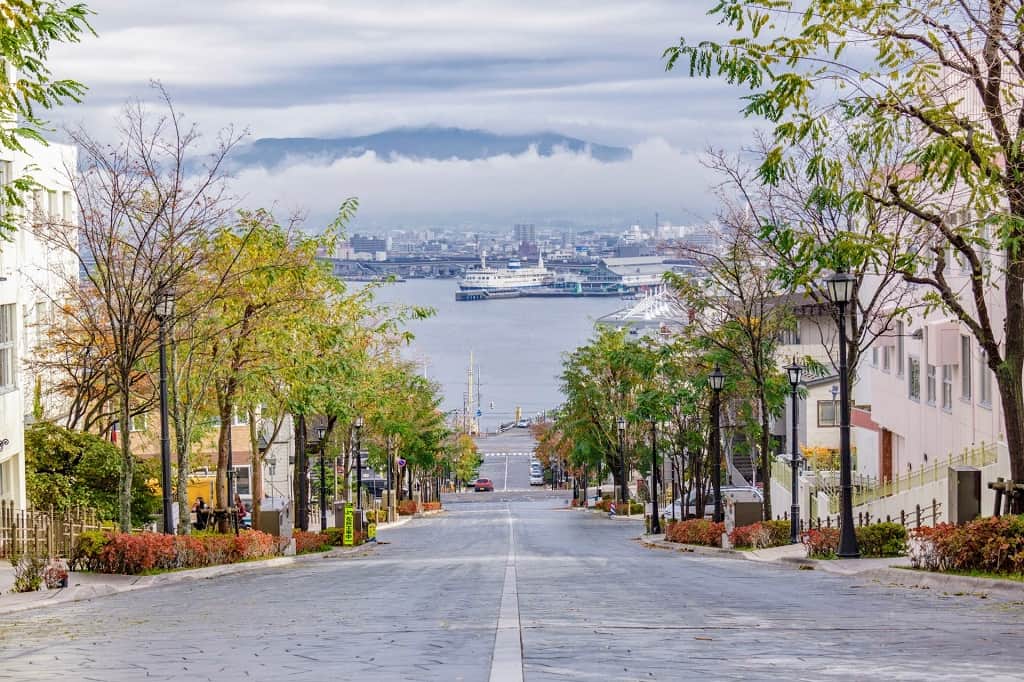
Yahatazaka, the harbour view hill in Hakodate
Highlights worth seeing include the Hakodate Port, a Victorian-era structure that is still in use today. The Kanemori red brick warehouses have been renovated creating a mix of shopping, museums, restaurants, cafes, bars etc. providing a great area to spend a leisurely stroll. (Download a free PDF map and guide of the district HERE)
With a peak of 334m, Mount Hakodate overlooks the small city and the views from the top, on a clear day out over the bay and during the nighttime for the lights of the city below, are a major attraction. A ropeway carries you up effortlessly, but there's also a hiking trail for the more energetic, taking around 1 hour.
The vast Goryōkaku ('five-point fort') is a spectacular sight, particularly when seen from the air. (Nearby Goryokaku Tower has a viewing platform at a height of 90m from which you can take in views of the fort.) It's dramatic five stars, surrounded by a moat look as much like something that could have been dropped by aliens as much as built by humans (especially when lit-up at night).
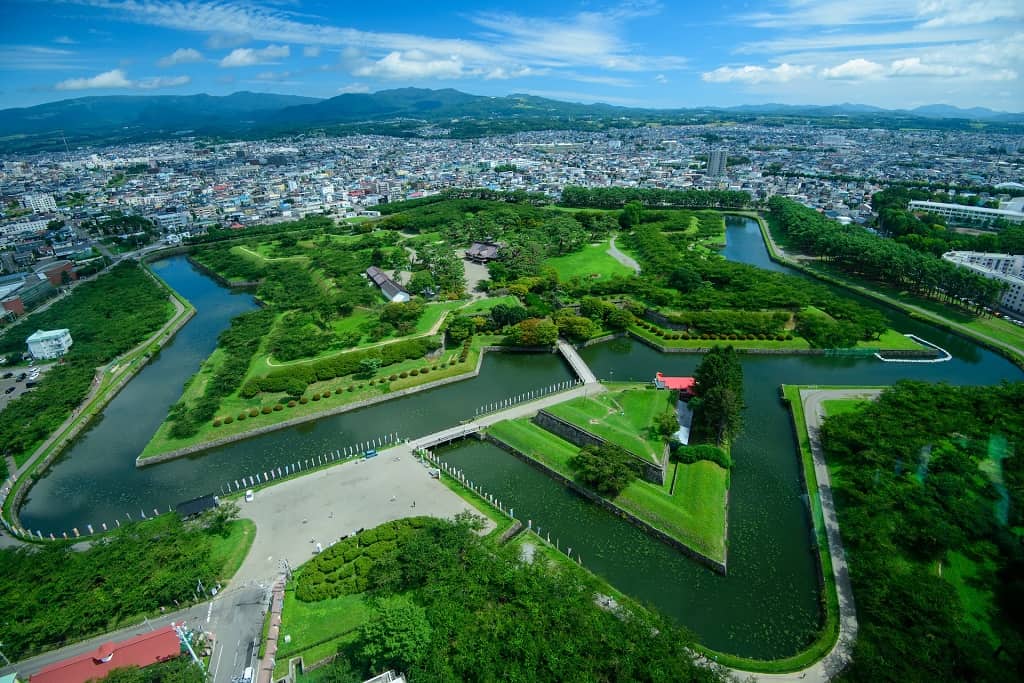
Hakodate's Goryōkaku 'five-star' fort is a spectacular sight
Built during the Tokugawa Shogunate, it was designed by Takeda Ayasaburō in 1855, his plan based on the work of the French military engineer and architect Vauban. During sakura season locals flock to the park at its centre the view the cherry blossom.
Foodies should sample Hakodate ramen, a distinctive mix of chicken, pork, kelp and seafood in a clear, salty broth.
Not far from Hakodate is Yunokawa Onsen, one of Hokkaido's most popular onsen resorts. It's located close to Hakodate Airport. Yunokawa Onsen is easily accessed using local train and bus services that run from the Goryōkaku and Motomachi downtown areas of Hakodate.
Highlights of Asahikawa
The second-largest city on Hokkaido (after Sapporo) Asahikawa may be best-known for the Asahiyama Zoo, its museums, as a ski resort and sake, but there's also a growing creative culture in the city, broadening its appeal.
UNESCO approved Asahikawa joining its Network of Creative Cities as a Design City in 2019, recognition that the local artisans working in the fields of arts and crafts are beginning to get international attention. Souvenirs can be picked up at boutiques and galleries across the city and public sculptures can be viewed for free along Heiwa Street.
The city is at the foot of Mt. Asahidake. A cable car takes visitors to the summit providing panoramic views over the city.
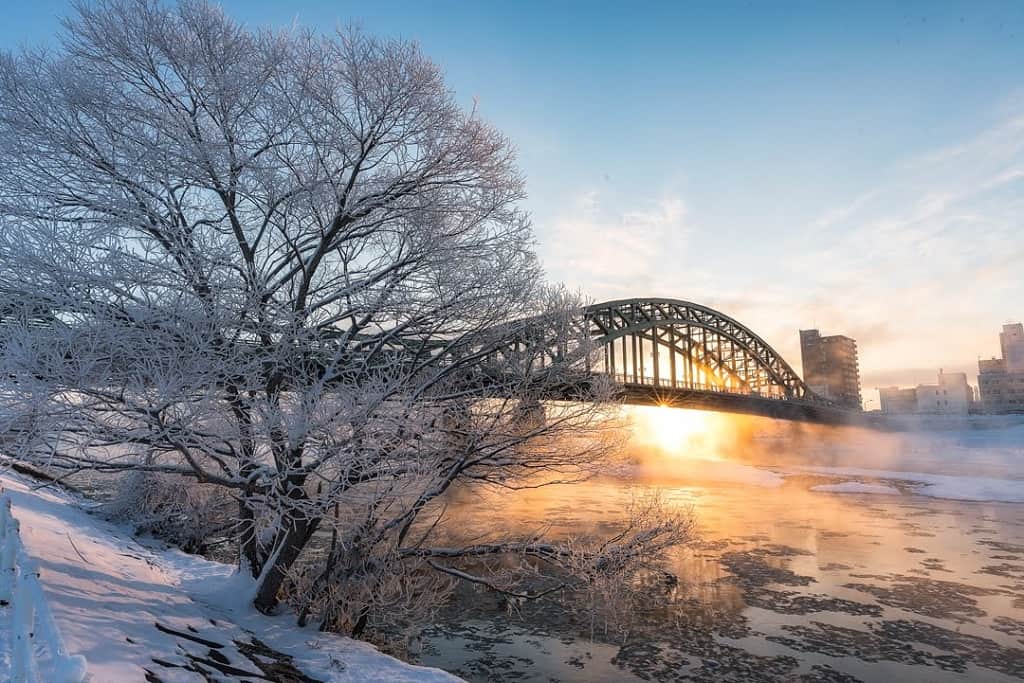
Asahi Bridge in Asahikawa | Photo: Nryate, CC BY-SA 4.0
Incredibly, Asahikawa has more than 100 rivers running through it (kawa means river in Japanese). And all that fresh running water lends itself to sake brewing, with three local breweries, Takasago, Otokoyama and Taisetsu no Kura vying for your business and producing sake that has both a national and international reputation for quality.
Although it has a far lower profile, the annual Asahikawa Winter Festival (early February) is second only in size to its world famous Sapporo counterpart. So if you love the idea of all the attractions of a winter festival (exquisitely crafted ice sculptures, nighttime shows, street lights, fireworks and street food) but want try one that has yet to break through to a wider audience, add this to your shortlist of Hokkaido activities.
Furano's lavender and flower fields
Hanahata means 'flower garden' or 'flower bed' and the landscape surrounding Furano city, in central Hokkaido, is famous for its hanahata, large rolling fields of lavender and multicoloured flower displays.
Every year more than 1 million nature lovers head to the region to take in the dramatic floral displays. A variety of different flowers are grown here, with displays peaking throughout the year, from May through to October.
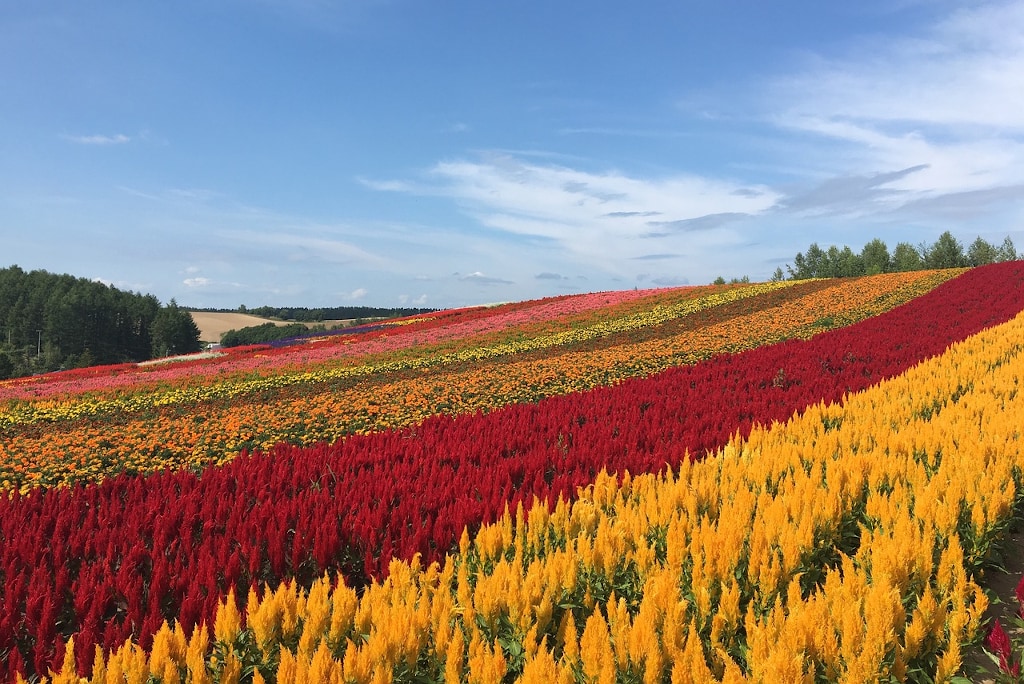
Lupines and tulips peak in May, followed in June by blue salvia and poppies. Mid-July is the peak for the famous lavender (although the early varieties start to appear in late June). Sunflowers and cosmos are up next in August, with yellow mustard and dahlias ushering in the autumn between September and October.
Among the locations to view the seasonal blooms are:
VIDEO: The Ainu - Japan's Forgotten Indigenous People
What to do - events and festivals
There are a good number of local events and festivals held annually across Hokkaido. Inevitably, the majority of them take place in wintertime when each of the major towns and cities offers their own twist on the seasonal celebrations. The majority of them are free to enter. A few charge a small fee.
Spread across the year, a few worth considering include:
Sapporo Snow Festival
February 4th - 11th
The famous Sapporo Snow Festival is a festival held annually each winter attracting visitors from all over Japan and, increasingly, overseas.
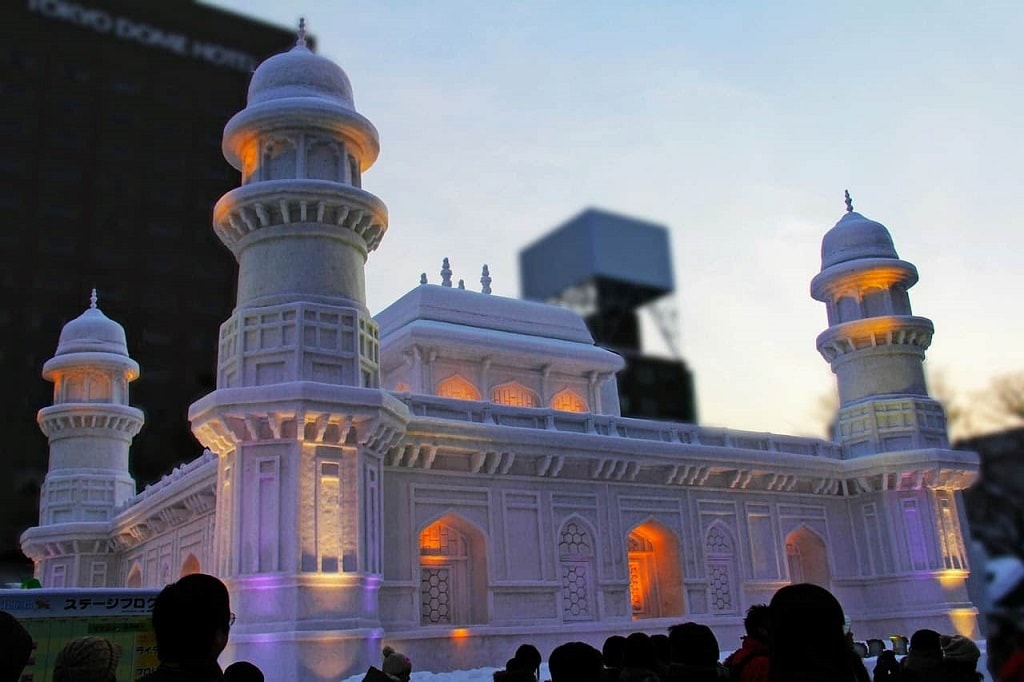
Ice sculptors from around the world compete to create incredible ice and snow sculptures, some reaching over 25 meters wide and 15 meters high. At night the sculptures are lit up as tourists and local families take advantage of the yatai street food stalls. Includes the Susukino Ice Festival.
Otaru Snow Light Path Festival
Mid February (around 11th - 18th)
Spanning the area from Otaru Canal to the Former Temiya Railway Line this is the perfect place for a romantic, candlelit stroll. The canal is filled with lanterns floating on the water, while in the stretch near Temiya Railway candles are placed inside snow and ice sculptures lining the walk
Lake Shikotsu Ice Festival
January 29th - February 23rd
Multicoloured illuminated ice sculptures are the main attraction at this immersive experience. Visitors are encouraged to climb inside, walk along and explore the shapes made by spraying and freezing water from Lake Shikotsu using industrial-sized sprinkler jets.
Local hot springs surround the venue if you need warming up. Also includes seasonal events like ice skating, ice slides, fireworks, and food stalls. A ¥300 entry fee applies.
Otaru Umeshu Festival
Mid April - early May
Hokkaido's Tanaka Sake Brewing Kikkogura plays host to the festival celebrating all things umeshu (plum liqueur) - my personal favourite of Japan's alcoholic drinks.
Aside from tastings, there's also a selection of foods using the plums in their ingredients, including plum cheesecake, plum vinegar, and even plum miso.
Yosakoi Soran Festival in Sapporo
Early - mid June
Yosakoi is a Japanese dance style blending modern and traditional Japanese dance and music. Teams from across Hokkaido gather in Sapporo's Odori Park to compete in an intense, energetic and colourful display.
Daisetsuzan Mountain Festival (inc. traditional Ainu dance)
Mid June
This free festival in Asahidake Onsen signals the official start of the hiking season. Visitors and locals gather around a bonfire and watch traditional Ainu dancing and rituals.
Access by public transport is slow (requiring a train and a bus taking around 10 hours from Sapporo). Driving (or by taxi) is closer to 3 hours using toll roads, so plan how you'll get there in advance.
Hokkai Bon Odori
Mid August
Hokkaido's take on Japan's popular Bon Odori dance and music festivals which have been taking pace for more than 500 years takes place on Sapporo's Odori Park. Obon is fusion of the ancient Japanese belief in ancestral spirits and a Japanese Buddhist custom to honor the spirits of one's ancestors.
Umaimon Festival
Mid September
Umaimon is a 3-day family-friendly music festival held at the Rutsutsu Resort - an hour and a half drive south of Sapporo. An all you can eat BBQ, unlimited ride fairground and a firework display each evening are all included in the ticket price.
Niseko Autumn Food Festival
Late September - early October
Held in Niseko Village, this eco-focused seasonal food event features produce from local restaurants and bars, alongside a live music stage across its 4 days.
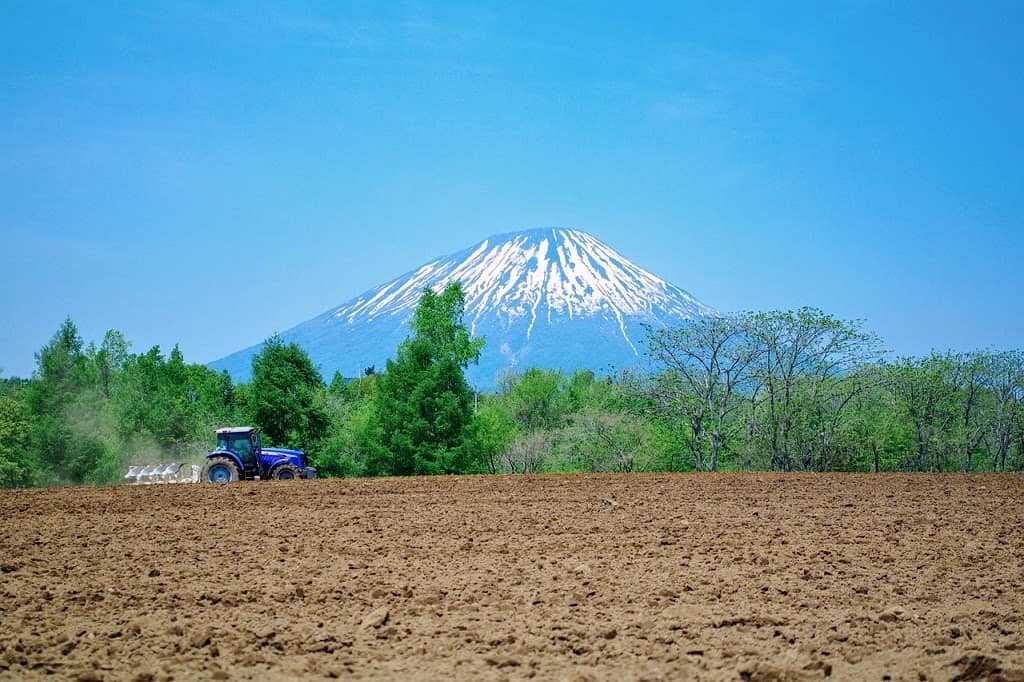
Mount Yotei provides a spectacular natural backdrop to the Niseko Autumn Food Festival held in October each year
The Mt. Fuji-like Mount Yōtei provides a spectacular natural backdrop to the proceedings.
Sapporo White Illumination
November 22nd - December 25th
For a month spanning the end of November through to Christmas, Sapporo's Odori Park (again!) is the setting for a free annual illumination event. Multicoloured lights adorn the trees and waterfalls of bulbs hang from local landmarks and fountains.
A Christmas market with food stalls and gifts help create a seasonal atmosphere along Sapporo's main street.
Film Festivals
There's also a couple of film festivals held every year. The Yubari Fantastic Film Festival usually runs during late July/early August. This little town hosts what it claims to be "The most fun movie festival in the world". While the Sapporo International Short Film Festival (early October to early November) showcases a range of Japanese and international short films.
What to eat (the best of Hokkaido)
Eating Hokkaido is, quite simply, one of life's great pleasures. In short, this is one of the most satisfying foodie experiences you can have.
You can expect fresh vegetables (potatoes, corn and onions are highlights) and fruit like melons are grown in abundance across the island. Wassamu Town has the largest area of land anywhere in Japan dedicated exclusively to growing pumpkins. When it comes to seafood, the region is a source of some of the best quality sea cuisine you can find, the cold sea waters surrounding the island making ideal for this.
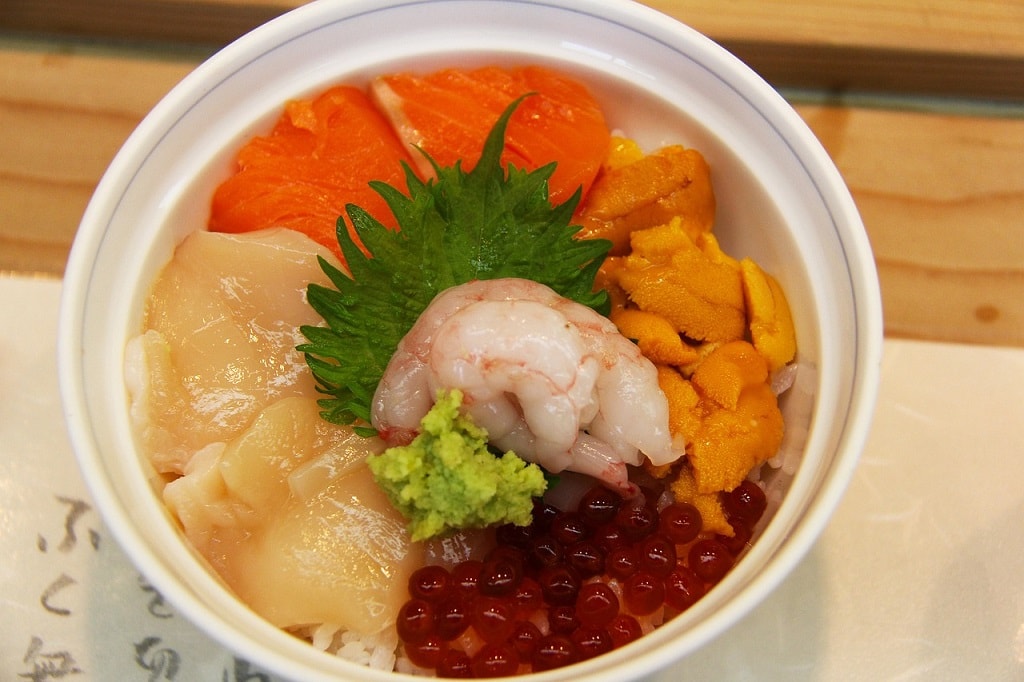
The seafood available in Hokkaido is some of Japan's finest: sea urchin, cod roe, salmon and prawns served with shiso leaf and wasabi
Locals wax lyrical about the uni (sea urchin) found off the island of the tiny islands of Rishiri and Rebun, while kani (crab), ika (squid), ikura (salmon roe) and hotate (scallops) are all reliable sources of fine examples of Japan's natural bounties.
If you're a meat fan then the ever-popular ramen abounds. Hakodate ramen is made from a mixture of chicken, pork, kelp and seafood, giving it a clear salty broth. While Sapporo and Asahikawa both also have their own versions.
Jingisukan, or 'Genghis Khan' is a Mongolian-inspired mutton barbecue style dish. It's a Sapporo staple and popular among locals during Hokkaido's winter and summer festivals. Or the butadon (pork bowl) comfort food with its glazed pork on top of white rice.
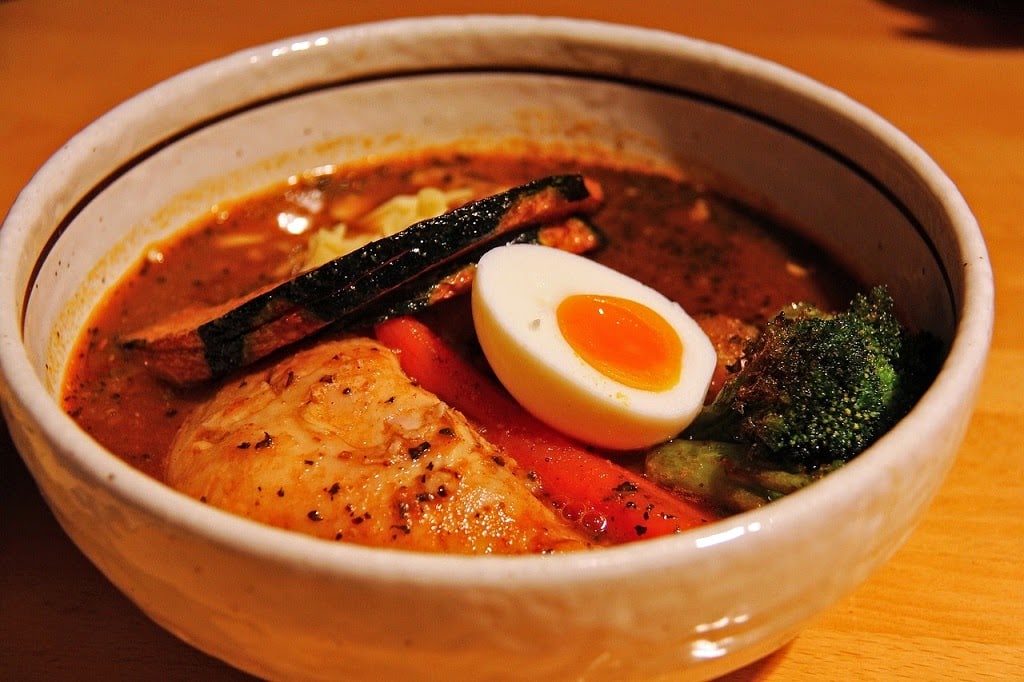
Sapporo pork ramen is just one of Hokkaido's versions of this ever popular Japanese dish - perfect for winter days
And let's not forget the dairy industry - Hokkaido milk, butter and cheese are among the best in Japan. As an aficionado of morning toast, I can personal vouch for the quality of Hokkaido butter.
Hokkaido's butter cookie sandwiches, which consist of butter and raisins in the middle sandwiched between two light butter cookies are recognised nationally and make great souvenirs.
For a summer's day treat while visiting the seasonal lavender displays in Furano, try Farm Tomita's lavender ice cream. It tastes better than it sounds, with the delicate, floral of the island's famous lavender pairs beautifully Hokkaido's rich, creamy milk.
Where to stay on Hokkaido
There's something to suit all budgets and tastes on Hokkaido. If you're looking to pamper yourself in luxury, just looking for a stylish mid-range hotel or only need the cheapest options, here's a few suggestions.
Sapporo Recommendations
In Sapporo the JR Tower Hotel Nikko Sapporo has direct access from JR Sapporo Train Station, and offers spectacular nighttime views from its 35th floor Sky J restaurant and bar.
Conveniently located in the heart of the city, the Onsen Ryokan Yuen Sapporo's tasteful modern twist on a traditional Japanese ryokan inn comes complete with it own natural hot spring.
The 3-star Tokyu Stay Sapporo Odori is right in the heart of the city just off Odori Park, making it ideal for the numerous seasonal events and festivals held here.
Hakodate Recommendations
In Hakodate, the 4-Star Hotel WBF Hakodate Watatsuminoyu may resemble a life-sized Borg cube from the outside, but inside there's plenty of comforts to lure you in, including a spa and wellness centre with an onsen.
Also, take a look at HakoBA Hakodate by The Share Hotels. This 3-star accommodation is located inside a landmark former bank, its imposing architecture includes tall, narrow windows spanning all three stories.
Close to JR Hakodate Station, the FAV Hotel Hakodate is highly rated by guests, especially couples, who like the homely styling of its rooms and its great location, with the morning market only a stone's throw away.
Asahikawa Recommendations
In Asahikawa, rooms at the distinctive OMO7 Asahikawa by Hoshino Resorts, are a blend of Japanese and western influences, with tatami mats and raise western beds in the same, colourful accommodation.
If your tastes are for bright and airy but with a muted palette then the interiors at Hotel Aamanek Asahikawa have an almost Scandinavian feel to them. Its onsen is particularly popular with guests.
Meanwhile, the 3-Star Hotel WBF Grande Asahikawa is a good, mid-range option offering family rooms (some with tatami mats) and a spa and wellness centre with onsen.
Furano Recommendations
In Furano,the Shin Furano Prince Hotel is located directly in the Furano Ski Resort, and so offer ski-to-door access between the resort and the hotel. Ideal for anyone coming to Furano the the ski season.
Meanwhile, the Winery Hotel and Condominium Hitohana is a highly-rated 3-star hotel, 2.7 km (1.7 miles) from Furano Station. A variety of room types ranging from Standard Twin, through to Suites are available. If you don't need a suite but do want more room space upgrade to a Superior or Delux Hollywood Twin Room.
If its a home from home you're after then the apartments at Fresh Powder Accommodation could be a good choice. Facilities include a kitchen. washing machine, bath, balcony and views of Furano city. And if you're skiing then the ski rack, drying room and ski storage will all help make your stay easy.
Latest Hokkaido Hotel Deals via Booking.com
How to get to Hokkaido
By Train
Hokkaido was connected to Honshu by the Seikan Tunnel in 1988 (the world's longest undersea tunnel at 53.8km), designed as straight as possible to accommodate Japan's famous bullet trains, which started operating in 2016.
The shinkansen from Tokyo to Hakodate (Shin-Hakodate-Hokuto station) takes 4hrs. The Japan Rail Pass is valid on all Shinkansen services on the Hokkaido Shinkansen, including the fastest Hayabusa shinkansen (seat reservations are required on all Hayabusa services).
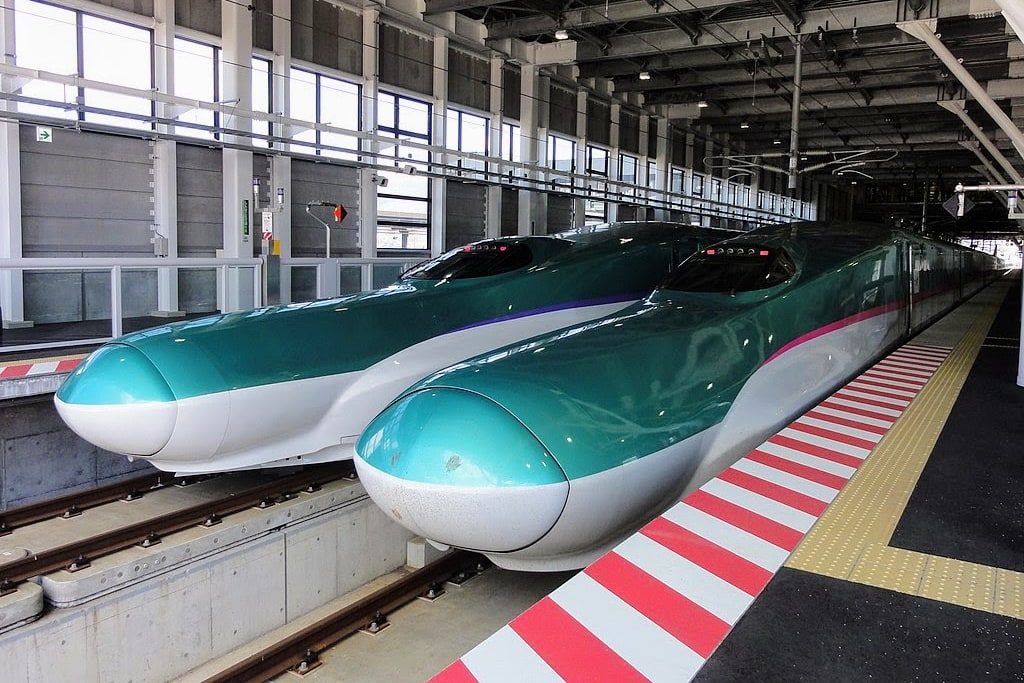
JR Hokkaido Hayabusa shinkansen trains at Shin-Hakodate-Hokuto Station | Photo: Rsa, CC BY-SA 3.0
NOTE: If you're destination is Sapporo you'll need to take the Hakodate Liner service from Hakodate's Shin-Hakodate station (where all the bullet trains terminate) to Hakodate Station. Then, from Hakodate, you'll need to take a Limited Express to Sapporo, taking an extra 3hrs 50mins. Meaning you'll be on trains for more than 8 hours.
Work is underway to extend the Hokkaido shinkansen line to Sapporo, and is scheduled to open by 2031. This is expected to cut the journey time from Tokyo to Sapporo to around 5 hours.
From Aomori in northern Tohoku, take either the Limited Express Super Hakucho or Limited Express Hakucho from Shin-Aomori to Aomori (change trains from/to the Tohoku Shinkansen), then on to Hakodate. Journey time is 2hrs 20min from Shin-Aomori, and around 1hr 40mins from Aomori.
To help you plan rail travel, I recommend using Jorudan's Japan Transit Planner website and app.
By Air
Hokkaido has seven airports providing links to the national air network as well as good international connectivity (including some direct flights) with regional neighbours including South Korea, China, Russia, Taiwan and Hong Kong.
Hokkaido is also included in both JAL's Japan Explorer Pass and ANA's Experience Japan fares for foreign visitors.
Flights from Tokyo take between 2hrs 15mins to 5hrs depending on the start and destination airports. Quickest flights are from Tokyo's Narita to Chitose (2hrs 15mins), but there are more options from Haneda, with the shortest flight time being around 3.5hrs.
Check flight availability to Sapporo
By Sea
Several Japanese ferry companies provide services connecting Hokkaido with a range of cities on Honshu, inlcuding Akita, Aomori, Hachinohe, Nagoya (via Sendai), Niigata, and Sendai.
How to get around Hokkaido
By Railway
Beyond Hakodate's Shin-Hakodate-Hokuto station, there are no shinkansen services. But there are Limited Express and local trains that run on a network operated by the JR Hokkaido Railway Company. The central region surrounding the capital Sapporo is the best connected and served.
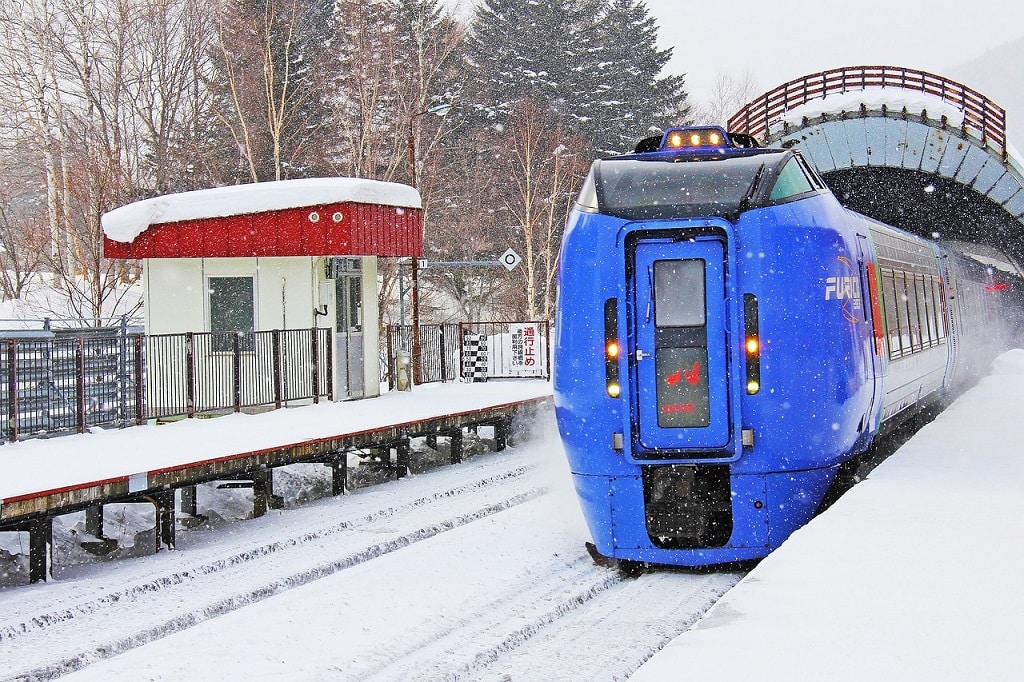
The Soya Limited Express runs daily connecting Sapporo with remote Wakkanai
There are lines serving the northernmost city of Wakkanai and out to the east to destinations such as Shiretoko-Shari and Kushiro. But the heartland and southeastern areas there are few to no lines. Having said that, all the major destinations are included, and you can combine rail and bus travel to get access to less popular destinations.
Whole island and regional rail passes are available and the Japan Rail Pass is valid on the entire network.
TIP: If you're committed to rail travel in Japan then I recommend picking up a copy of the excellent book Japan By Rail published by Trailblazer.
By Bus
A number of area-based bus companies operate a network of bus services across Hokkaido on both a local and itercity basis. Travel on buses operated by JR Hokkaido is included within the Japan Rail Pass without any extra charge, making travel across the island using a combination of trains and buses pretty simple.
Car / Taxi
If you're up for driving in Japan, rental cars are readily available and offer real flexibility for exploring the island on your own terms and timetable. Hokkaido is one of the best places to try driving in Japan as there are few major roads (so easier not to get lost!) and, outside of the cities, there's little traffic. Read my post Driving in Japan Made Easy - A Beginner's Guide to learn more about the practicalities of driving in Japan.
As I always encourage, using local taxis is also a good option (particularly for those, like my wife and I, who do not drive). Cars can often be hired for a fixed rate for a set duration and you might be lucky enough to also get a driver who speaks a little English and is happy to drive you around an area, acting as a local guide.
Subway and Trams (Sapporo)
In the capital Sapporo there's a three-line subway system running from 6am to midnight. There's also a four-line tram (streetcar) service. Get a One-Day Card for unlimited one-day use on subways, buses and trams within Sapporo City, or the SAPICA IC Card (the local version of the better-known Suica card) for the subway.
If you found this guide helpful, please help spread the word by sharing this photo:
Resources
Hokkaido Destinations & Experiences (Featured Posts)
Selected posts about destinations in Hokkaido:
12 Must-Try Outdoor Activities in Japan
The Ainu – Japan’s Forgotten People
How To Cruise An Icebreaker Ship In Hokkaido
Moerenuma Park: Discover Sapporo’s Incredible Sculptural Playground
Japan Travel Tips: A Journey Into The Real Japan
Hokkaido YouTube Video Playlist
You can view my YouTube video playlist dedicated to Hokkaido HERE.
Hokkaido's Official Tourism Site
Sapporo Snow Festival Official Site
Japan Island Guides
To see all of my Japan Island Guides CLICK HERE

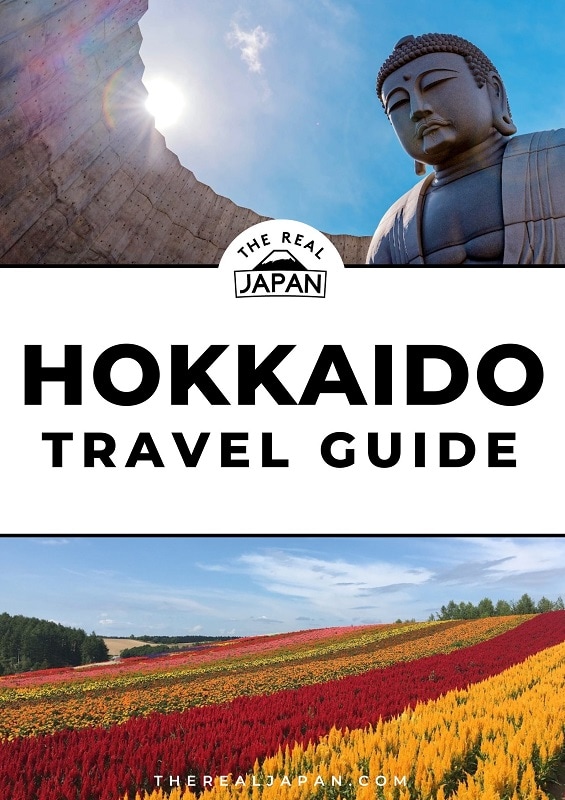
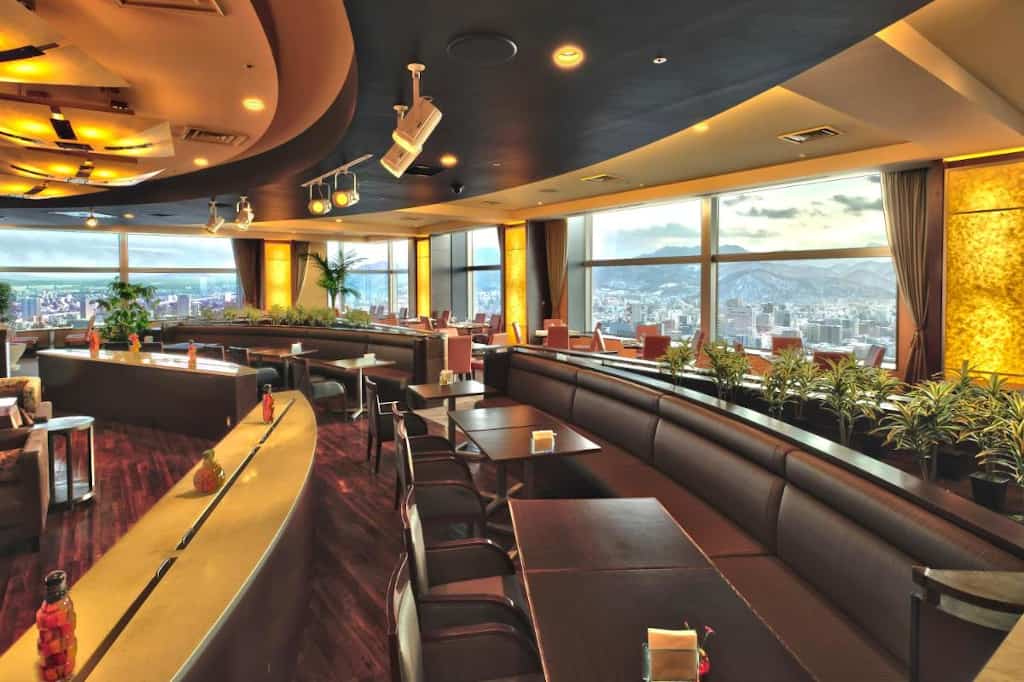
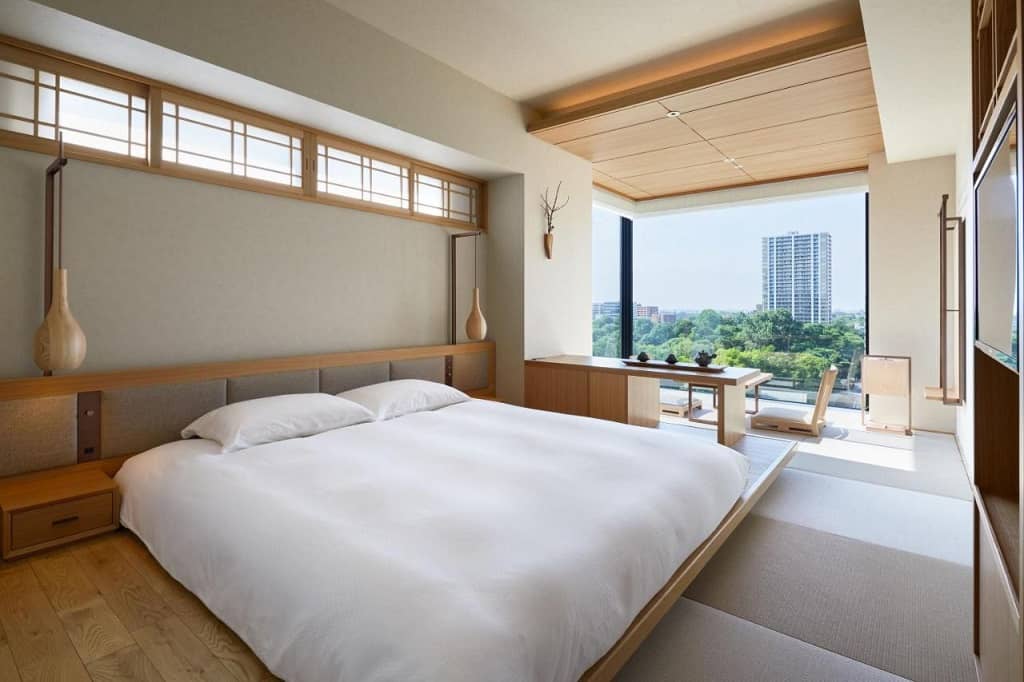
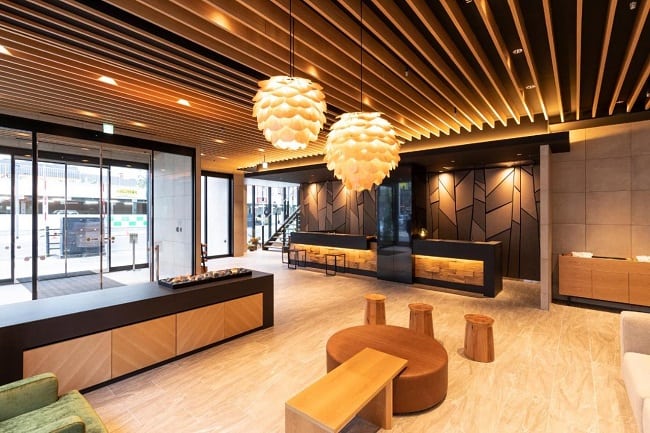
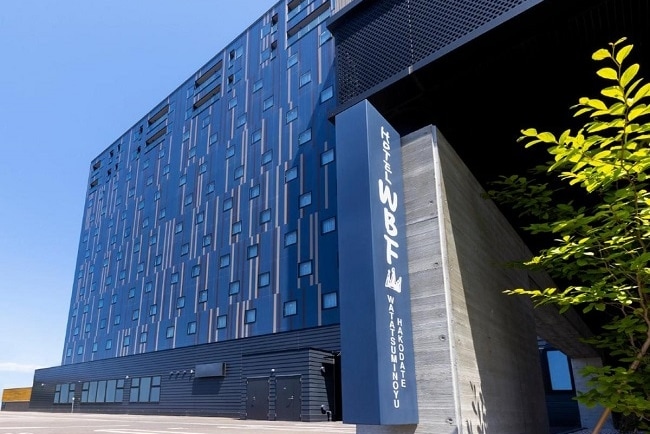
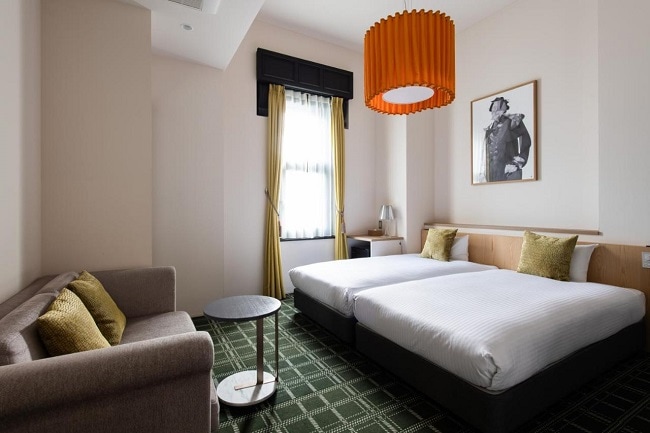
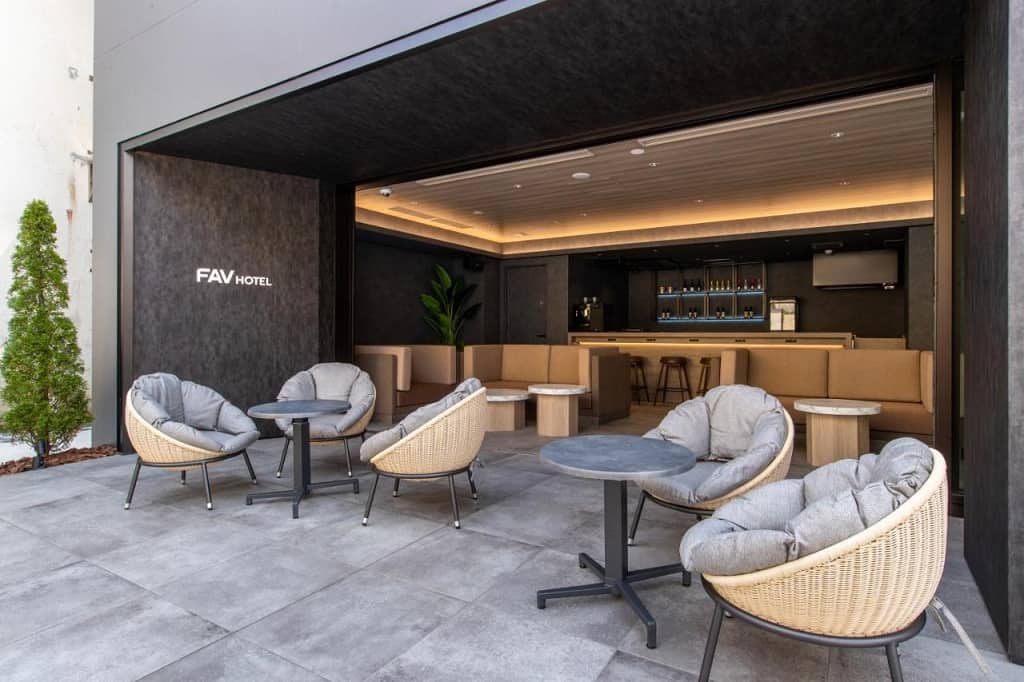
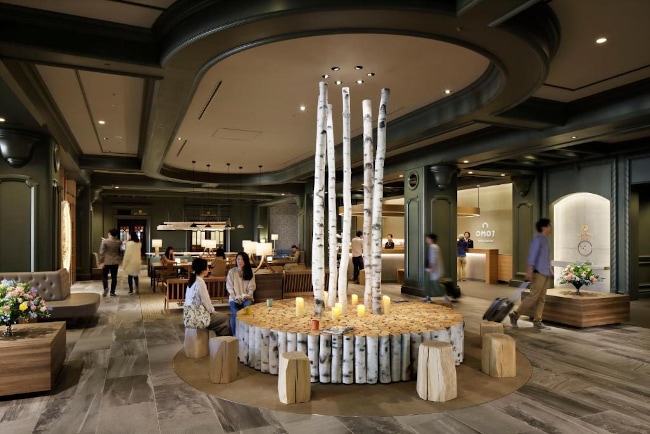
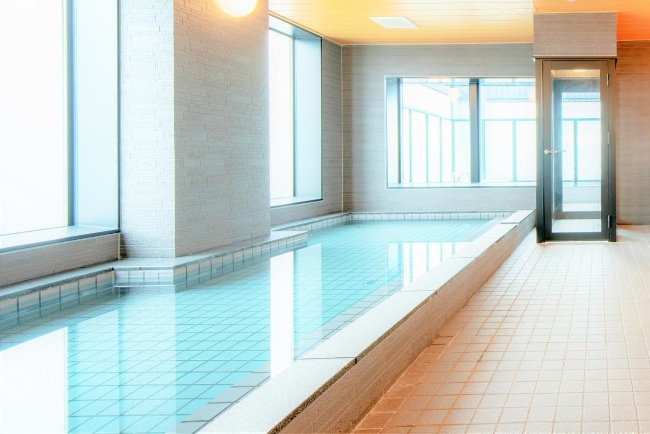
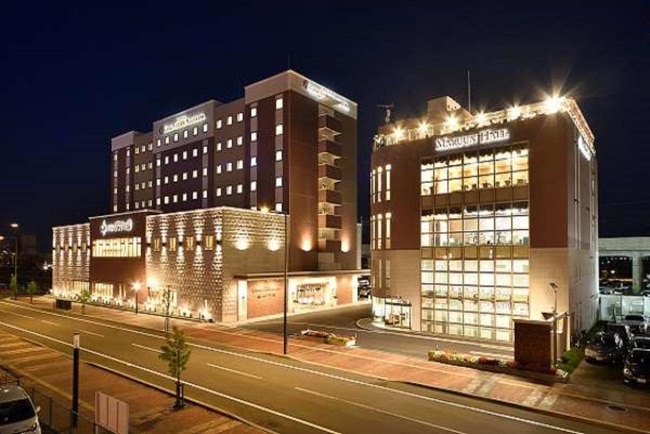
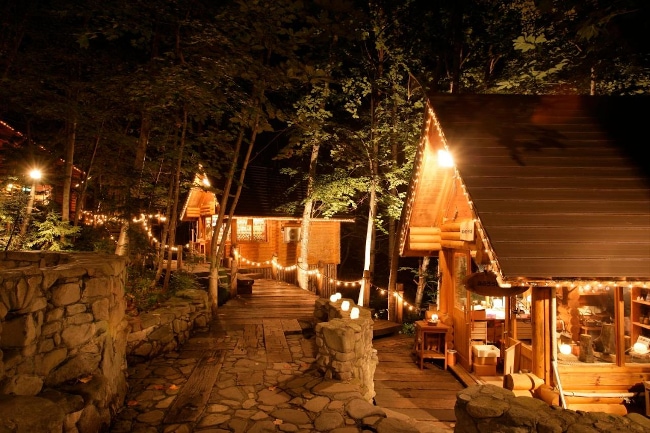
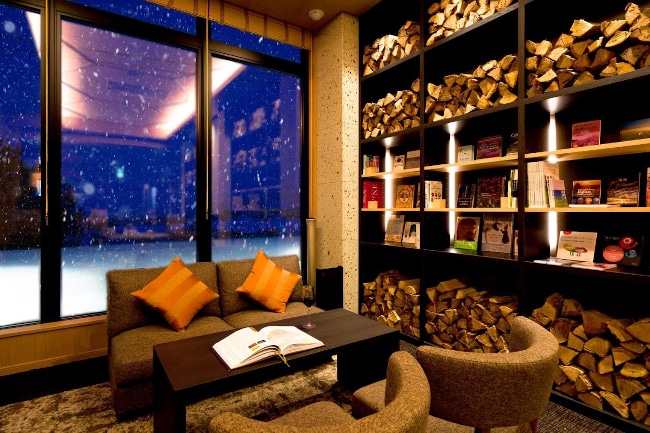
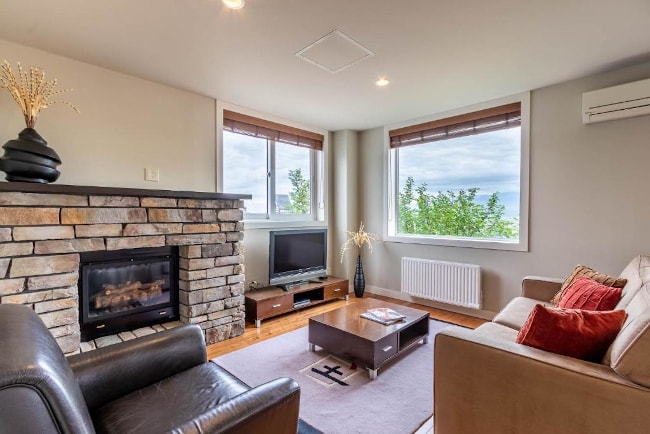
Where can i find shin hokaido time table, what time is the train? Is ti every hour?
Hi John – you can try Jorudan’s Japan Transit Planner website here: https://world.jorudan.co.jp/mln/en/
They also have apps for iOS and Android.
What a special place Rob. Magical. The unspoiled aspect of nature in Hokkaido would draw me in. Anywhere pristine carries a powerful but peaceful vibe with it.
Ryan
Thanks Ryan. I completely agree about nature. I spent most of my childhood in nature, climbing trees, etc. And wherever I am in the world I always want to sample some of the local natural world. Always calming and restorative.
Looks Lovely. But in my case… I think I would only visit at Summer. The heavy cold and I don’t get along very well.
I can understand that you don’t like it when it is too cold Manny.
Even though most visitors flock to Hokkaido for the winter (and its snow), if you’re not a fan of Japan’s really humid and hot summers, Hokkaido provides a refreshingly cooler option to the rest of the country.
I’m glad the Hokkaido love site comes up with the shakotan peninsula/cape kamui-saki (this area often gets left out in travel guides on hokkaido which is a real shame and it’s also a great scenic drive from Otaru to Niseko)
Thanks for the tip Robert! It’s fair to say that not all official tourism websites in Japan are very good, but Hokkaido Love is comfortably one of the better ones.
Hi Rob,
Where is the Makomanai Takino Cemetery located, and if you only had time to visit two of the five national parks which would you recommend (likely to be driving)?
Hello Scott, you can find more details on the Makomanai Takino Cemetery on the Hokkaido Love website here: https://en.visit-hokkaido.jp/destinations/a-buddha-rises-among-the-lavender-fields-of-makomanai-takino-cemetery
It’s hard for me to personally answer your question about national parks as I haven’t yet visited them all (and I don’t drive). But this post on the National Parks of Japan website has some good information about driving to national parks on Hokkaido: https://www.japan.travel/national-parks/plan-your-visit/guides-and-stories/driving-in-japans-national-parks/
It suggests eastern Hokkaido as it has multiple parks that are near one another. Including Shiretoko, Akan-Mashu and Kushiroshitsugen national parks.